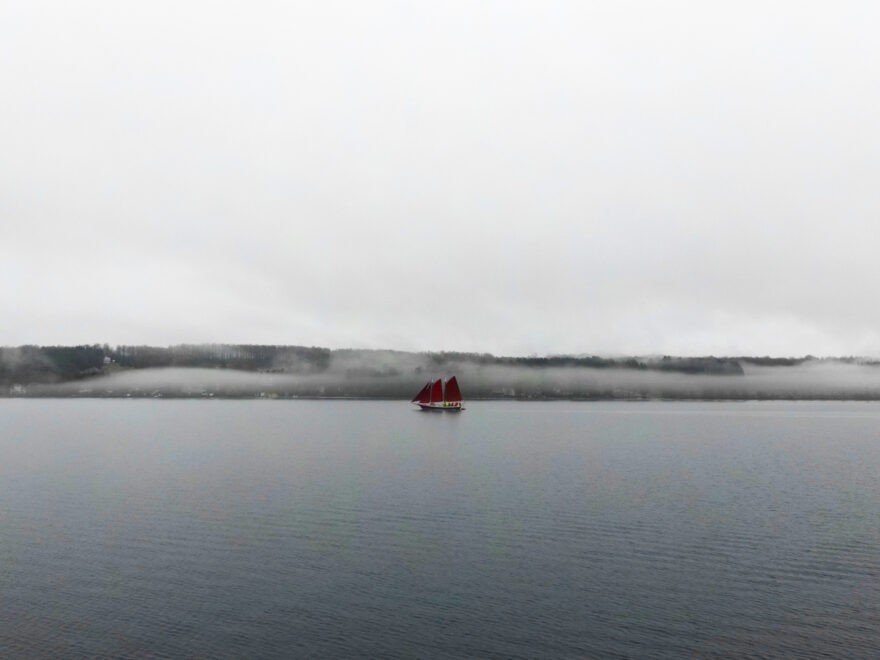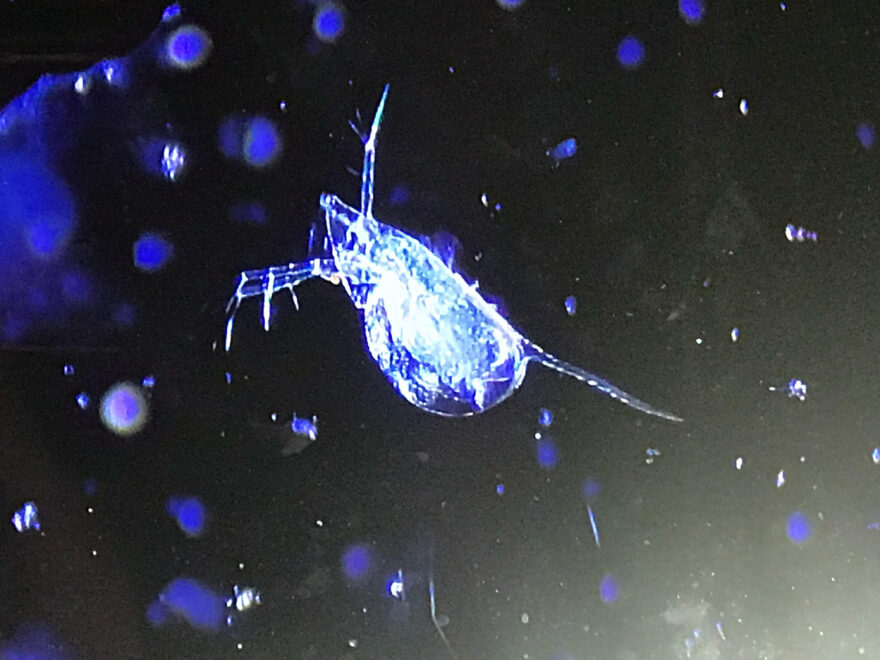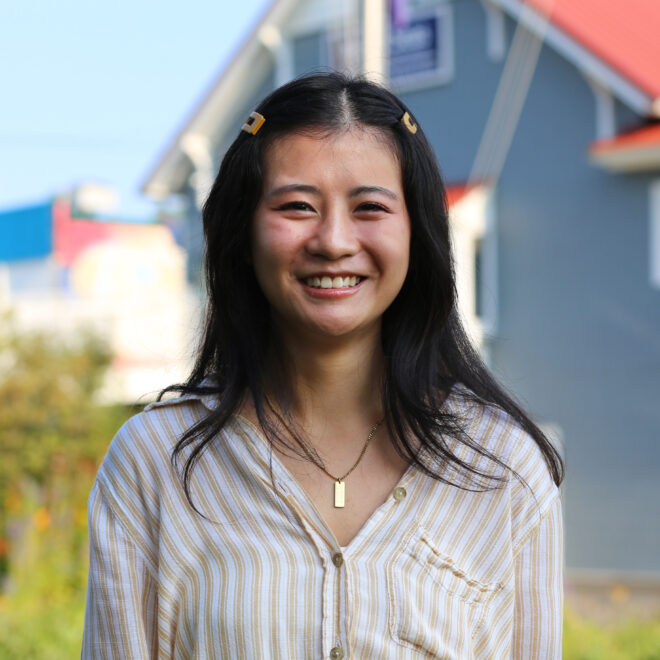
The bold and fierce wind whips at my hands and face, carrying the wet scent of coldness and lake water. Slate-gray clouds cloaking the sky are reminiscent of the morning’s drizzle. Red sails above my head stretch taught and then billow out, creating a mesmerizing, beautiful dance between gusty winds and sturdy sails. The hull of Inland Seas confidently cuts through the waves as they gurgle and slosh against the schooner. Gazing out at the green, red, and orange myriads of trees framing the deep, turquoise waters of Suttons Bay, my breath catches in my throat. Exaltation. Thrill. Tranquility. We are sailing.
However, tranquility doesn’t last very long if you’re on an Inland Seas Schoolship with a legion of fifth graders, all eager and excited to be scientists, sailors, and stewards. Brimming with enthusiasm, curiosity, and awe of their surroundings and the material they are learning about, these students are a reminder that once upon a time, I was one of those wide-eyed elementary school students investigating what lies beneath the water and raising the anchor aboard a tall ship. Unbeknownst to me, those long-ago moments would mark the beginning of my voyage with Inland Seas. After graduating from Grand Valley State University with a bachelor’s degree in wildlife biology, I returned to the organization that helped set sail my passion for the Great Lakes, this time as a Fall Education Intern, with hopes that I would inspire others the same way that I had been.

When asked to reflect on my time with Inland Seas, I realized that it was no easy task; if I were to include all the experiences I wanted to share, my blog post would teeter on the edge of evolving into a short novel. I could spend countless pages describing the early mornings when the hazy sun would cast a golden glow across the glassy water, slowly chasing away the night’s crispy chill lingering in the air until no trace of coolness remained in the afternoon. I could write several chapters about the zooming zooplankton parties happening below deck on what is fondly known as Plankton TV (one of the best channels on board); no plankton party is complete without the chorus of “oohs” and “aahs” (often accompanied with shrieks of shock and bewilderment) as a calanoid copepod darts across the screen, or as a spiny water flea (Bythotrephes longimanus) squiggles into view with its alien-like features on full display (cue the screaming). How could I capture the amazement when a group learns about these microscopic creatures and their vital role in the Great Lakes food web? Surely, I can’t leave out the feeling of indescribable joy after witnessing a student’s eyes inquisitively light up when they discover something new and their intense desire to keep inspecting. Perhaps I should omit the time when I accidentally sprayed a student with a hose during a Diving Deeper sail (dear student, if you’re reading this, I want to apologize again, but we were wet from the rain anyway).

Previously, I had experience mentoring students in a lab as a teacher’s assistant in college, but teaching on a sailing vessel was a beast I had yet to encounter. On the first sail of the Fall Schoolship season, I quickly learned that personal space was a luxury not afforded on board with some 30-plus participants. I tried my best to tuck myself into whatever free nook I could find but somehow found myself right where a crew member needed to go. The first half of the sail was a whirlwind and blur of shuffling and chattering kids, but Marta, the plankton guru I was shadowing, was a beacon of light guiding me. She bestowed her tips and tricks, thoroughly explaining the various parts of the program where I might find it useful to do X, Y, and Z. As the Schoolship sails continued, I became familiar with the routines of the programs. When the crew hauled up the trawl net, I learned that standing midship is not the best place to be, lest I end up tangled in the netting like a round goby (Neogobious melanostomus). After each sail, I noted how to improve my teaching methods; each challenge I encountered was a new learning opportunity. Handing out equipment after explaining the purpose minimized distractions; addressing students individually after posing a question alleviated long pauses of awkward silence and blank stares; assigning specific tasks helped to contain the chaos and made the sampling and analyzing process proceed more smoothly; squeezing the handle of the hose while changing the settings and standing in front of a student is a recipe for a sleepless night as you replay your embarrassing actions.
Throughout this, I knew I could rely on the encouragement and invaluable wisdom from the captain and crew, coworkers, and fellow instructors whenever I stumbled or struggled; everyone was kind and patient while I found my sea legs. Waking up every day and having the opportunity to work alongside passionate, knowledgeable, and caring people is an experience I will always treasure. Like the Great Lakes food web we teach, Inland Seas comprises key energy sources connected and stitched together: the Great Lakes, captains, crew, instructors, staff, volunteers, donors, students, community members, partner organizations, teachers, and schools. At the very foundation of this tremendous food web tapestry is schooner Inland Seas. All these components depend on and support each other to “inspire a lifetime of Great Lakes curiosity, stewardship, and passion in people of all ages.” Together, we can all inspire the next generation of Great Lakes scientists, sailors, and stewards.
Thank you to everyone who has made my internship so wonderful, and I can’t wait to return as a volunteer. My voyage with Inland Seas will continue, so until next time, fair winds!
This blog was written by Fall Education Intern Lia Cook. If you would like to share your story of Great Lakes adventure please contact us at marketing@schoolship.org.
